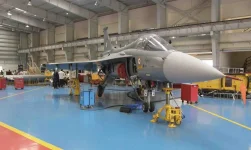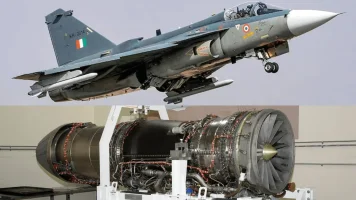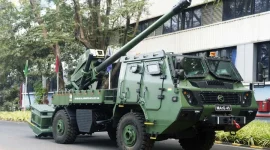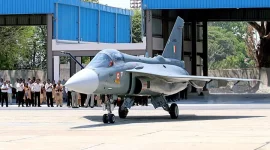- Views: 68
- Replies: 1
The combat effectiveness of Pakistan's premier Chinese-made HQ-9B air defence system has been critically undermined following its comprehensive failure to counter a series of Indian air strikes in early May.
The system, long promoted by Beijing as a direct competitor to Russia's formidable S-400 Triumf, was unable to intercept any Indian missiles or drones during the recent "Operation Sindoor," exposing significant technological and operational vulnerabilities.
The operation, which took place from May 7-10, 2025, was launched by the Indian Air Force (IAF) in retaliation for a terrorist attack in Pahalgam that resulted in 26 civilian casualties.
The strikes targeted terrorist camps and 11 Pakistan Air Force (PAF) bases. The performance of the HQ-9B during this engagement has raised serious questions about the credibility of Chinese military hardware and the strength of Pakistan's air defence network.
A Costly Bet on Chinese Technology
Islamabad's decision to procure the HQ-9B system was heavily influenced by China's assurances of its capabilities, presenting it as a cost-effective alternative to Russian platforms like the S-300 or S-350.Pakistan acquired the system, designated HQ-9P, in 2021 and upgraded it to the more advanced HQ-9B configuration by 2024.
This acquisition was part of a deepening defence relationship tied to the China-Pakistan Economic Corridor (CPEC), which has facilitated technology transfers for various military assets.
Chinese manufacturers claimed the HQ-9B could engage targets up to 300 km away and track multiple incoming threats simultaneously, rivalling the performance of the S-400. However, its real-world performance has debunked these claims.
In contrast, India's S-400 "Sudarshan Chakra" system demonstrated its superiority, successfully intercepting multiple Pakistani drones and missiles launched in retaliation.
In a notable engagement, the S-400 allegedly set a new world record for a surface-to-air missile system by shooting down a Pakistani Saab Erieye-2000 Airborne Early Warning & Control (AEW&C) aircraft at a distance of 314 km.
Technical Superiority of S-400 Evident in Combat
The gap in performance stems from fundamental differences in technology.The S-400 Triumf offers a layered defence umbrella with a detection range of 600 km and an engagement range of up to 400 km, utilizing four different missile types to counter a wide spectrum of threats, from stealth aircraft to hypersonic missiles.
Its advanced multi-layered Active Electronically Scanned Array (AESA) radar suite provides 360-degree coverage and is highly resistant to electronic jamming.
The HQ-9B, however, relies on a less advanced semi-active radar homing guidance system. This requires the system's ground-based radar to continuously illuminate the target for the missile to find its mark, making it highly vulnerable to modern electronic warfare.
During the Indian operation, IAF electronic warfare systems, including jammers, effectively blinded the HQ-9B's HT-233 radars. This allowed Indian BrahMos supersonic cruise missiles, SCALP stand-off missiles, and Harop loitering munitions to strike their targets with impunity, including an HQ-9B command post and several launchers near Lahore.
Crisis of Confidence and Future Outlook
The complete failure of the HQ-9B has reportedly triggered a crisis of confidence within Pakistan's defence establishment regarding its reliance on Chinese technology.The system's inability to counter even low-altitude drones, let alone advanced supersonic missiles like the BrahMos, has exposed critical gaps in Pakistan's Comprehensive Layered Integrated Air Defence (CLIAD).
Criticism has also surfaced on Chinese social media, with some blaming poor operational handling and lack of training by the Pakistani forces. However, the outcome has undeniably damaged the global reputation of China's export-grade defence systems.
In the aftermath, reports indicate that Pakistan is actively exploring alternatives to bolster its crippled air defences. Islamabad is showing interest in Turkey's SİPER air defence system and may approach Beijing for the more advanced HQ-19, which is designed with a dedicated anti-ballistic missile capability.
The incident serves as a stark reminder that Chinese advertised specifications do not always translate to combat success, leaving Pakistan to reconsider its strategic dependencies.






